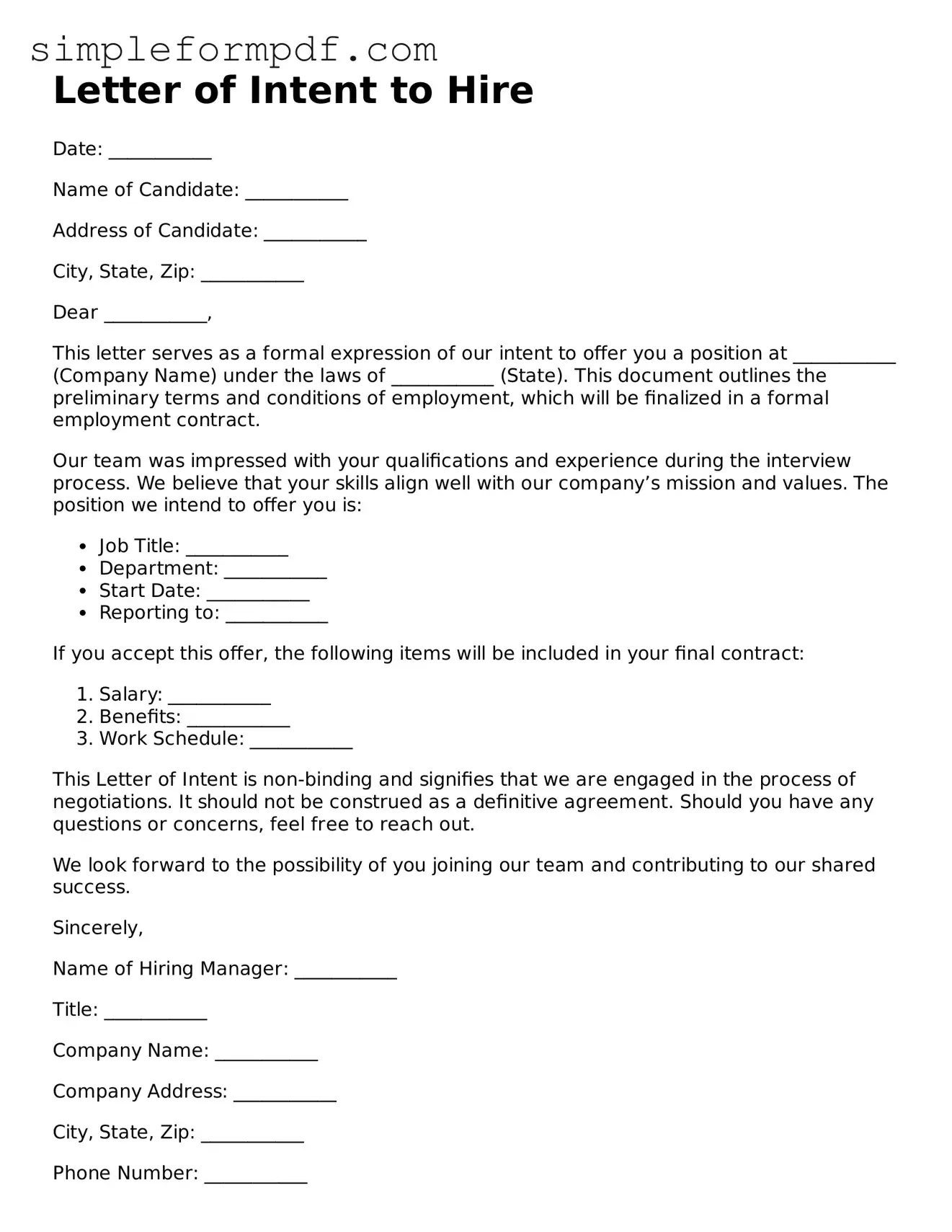Letter of Intent to Hire
Date: ___________
Name of Candidate: ___________
Address of Candidate: ___________
City, State, Zip: ___________
Dear ___________,
This letter serves as a formal expression of our intent to offer you a position at ___________ (Company Name) under the laws of ___________ (State). This document outlines the preliminary terms and conditions of employment, which will be finalized in a formal employment contract.
Our team was impressed with your qualifications and experience during the interview process. We believe that your skills align well with our company’s mission and values. The position we intend to offer you is:
- Job Title: ___________
- Department: ___________
- Start Date: ___________
- Reporting to: ___________
If you accept this offer, the following items will be included in your final contract:
- Salary: ___________
- Benefits: ___________
- Work Schedule: ___________
This Letter of Intent is non-binding and signifies that we are engaged in the process of negotiations. It should not be construed as a definitive agreement. Should you have any questions or concerns, feel free to reach out.
We look forward to the possibility of you joining our team and contributing to our shared success.
Sincerely,
Name of Hiring Manager: ___________
Title: ___________
Company Name: ___________
Company Address: ___________
City, State, Zip: ___________
Phone Number: ___________
Email Address: ___________
